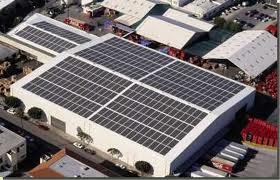
21 Jan EARTH MATTERS: BRIGHTER & BOULDER

Rooftop solar
The city of Boulder, Colorado, has long been a vibrant community that understands the symbiotic relationship between quality of life and health of the natural environment.
Since at least the 1960s, “Boulderites” have perceived themselves as environmental conservation trendsetters. When most cities in America were accommodating growth at any cost, Boulder voted to limit growth and create a greenbelt around the city to prevent it from becoming an extended suburb of Denver. Their overlying goal was to facilitate a better quality of life rather than accommodate growth. This bold, proactive approach to urban planning prevented Boulder from becoming a dirty, grey, concrete jungle like so many other cities in the U.S. As a result, Boulder has thrived socially, economically, and environmentally.
If you had a choice would you rather live in Houston or Boulder?
According to several mega-corporations, if given the choice, their employees would choose Boulder. When Conoco, an oil and gas behemoth, wanted to build a “campus center” for training, management, and research, they first considered Houston for their prime location but had difficultly recruiting high quality employees to move there. However, when these same potential employees were given the option to move to Boulder they jumped at the chance. The overwhelming reason for these potential employees to choose Boulder was “quality of life.”
This past summer, Boulder once again took a bold step to address the impacts of global climate change mitigation and local adaptation to climate change by voting to discontinue using Excel as an energy provider.
The problem was Excel refused to increase the amount of renewable energy they produced and decrease the amount of coal energy they supplied. Thus, Boulder voted to break from Excel and take ownership of their community’s municipal utilities in order to reduce their use of anthropogenic fossil fuel, lower greenhouse gas emission, and develop alternative, renewable energy sources. Their primary goals were to comply with the international Kyoto Protocol as mandated by their climate action plan and facilitate a secure energy source for their community. Another benefit of city owned utilities is the elimination of a private sector corporation that tends to elevate the cost of energy for profit, hence, securing the cost and supply of energy for future generations in Boulder.

Power lines
As a result of Boulder’s progressive move towards sustainability, city planners tapped into their community capacity and recruited key renewable energy experts to determine the types and percentage of renewable energy they could use with their existing infrastructure. As of today, the experts have determined that 51% of their energy could be supplied from renewable energy sources such as wind, solar, and by capturing methane released from their sewer treatment plant. According to a recent study by Ken Regelson of EnergyShouldBe.org, the existing rooftop space on commercial buildings in Boulder could provide enough renewable solar energy to meet their needs in the present and foreseeable future.
The limiting factor is not the potential availability of alternative energy sources but the existing “base load” infrastructure system that was not designed for intermittent sources of energy like wind, hydroelectric, and solar. Therefore, the real challenge involves implementing regulations, rebates, tax credits, and services to support development of renewable energy sources and eventually replace our countries antiquated energy infrastructure to accommodate obtaining 100% of our energy from renewable sources.


Sorry, the comment form is closed at this time.